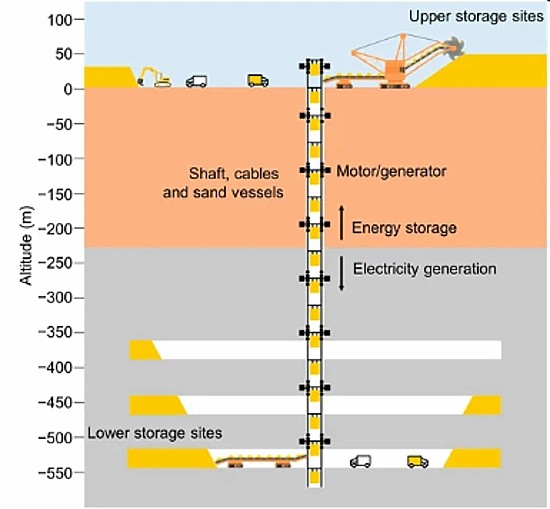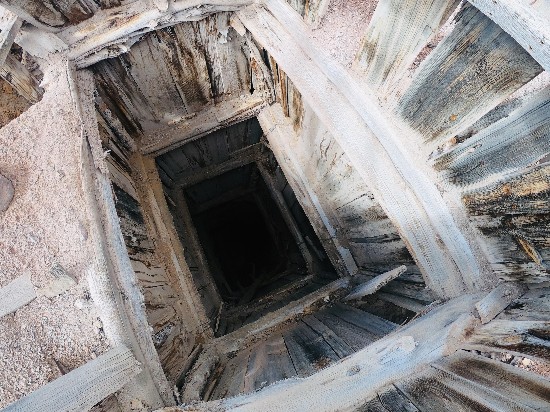When you read about mines your first thought may be about how energy-intensive extracting minerals from underground can be, and in the case of coal, how polluting. But this story turns old mines into good guys. At least that’s what a group of scientists are thinking.
In the United States alone that are more than a half million abandoned mines, most of them from coal. These are mines that have excavated shafts deep underground and installed elevators for vertical transportation and ventilation systems and life support systems. Once a mine is abandoned it seldom is rehabilitated leaving a hole in the ground that represents one of two things, an environmental menace, or one that could be an environmental benefit. Why the latter? Because those deep and long vertical shafts can be used for gravity batteries.
Back in 2012, I wrote about the GravityLight. This is a technology powered by ballast that generates electricity to light up an LED. The ballast bag is attached to a pulley attached to an LED lamp. When the bag is filled with soil, sand, or rock and released gravity-generated kinetic energy is produced which converts to electricity to light the light.
A gravity battery does the same thing without the light. The principle is the same for falling water turning turbines attached to generators in hydroelectric powerplants. It is all about converting kinetic energy from the force of gravity being exerted on a falling object which makes this a zero-emission energy source.
An article published in January entitled, “Underground Gravity Energy Storage: A Solution for Long-Term Energy Storage” in the journal Energies describes the technology. An international team of academics from Austria, Poland, China, Brazil, Finland, Croatia, Germany and Saudi Arabia have proposed what they call Underground Gravity Energy Storage (UGES) and it works like the GravityLight.
A UGES generates electricity using the weight of a large volume of sand and the kinetic force that can be harvested from the vertical drop in abandoned mine shafts. It is a storage battery that can feed the grid when intermittent renewable sources cannot generate the needed load across a power grid.
Sand gets stored at the top of the mine shaft. When the grid needs to stabilize the electricity load the call goes out to the UGES operator who releases the sand load down the shaft in a controlled plunge which creates kinetic energy to power turbines and generators. During low energy demand periods, power from the grid can be used to raise the sand back to the top of the shaft. An illustration below shows what an operating UGES would look like.

The authors of the paper estimate gravity batteries like the one above could operate at a cost of between USD $1 and $10 per Kilowatt-hour with the capacity to generate from 10 to 70 Terrawatt-hours of electricity.
Proposals for gravity batteries that use vertical drops include tower and high-rise building installations. Two such projects, one in Scotland, and the other in Switzerland are using weights between 50 and 60 tons that get dropped to generate renewable electricity. The building adaptation costs or tower new build would be more expensive than what is proposed here using abandoned mine shafts. With the latter nothing needs to be built to create the vertical drop which works best at depths greater than 200 metres (650 feet).
There are challenges in using decommissioned mines. Here are three I can think of:
- Abandoned mines are prone to flooding from underground water sources.
- Abandoned mines, especially where coal has been extracted can be sources of methane leaks.
- Shaft structural stability in an abandoned mine could be compromised leading to cave-ins.










[…] this thinking “outside the battery.” The concept is simple and as I have previously noted there may be many potential sites to put novel storage technologies in play to support intermittent […]
[…] hydroelectric power are two examples of commonly used kinetic energy sources. What else is there? Gravity combined with large drops can be a kinetic energy source. Back in February 2023, I wrote about […]